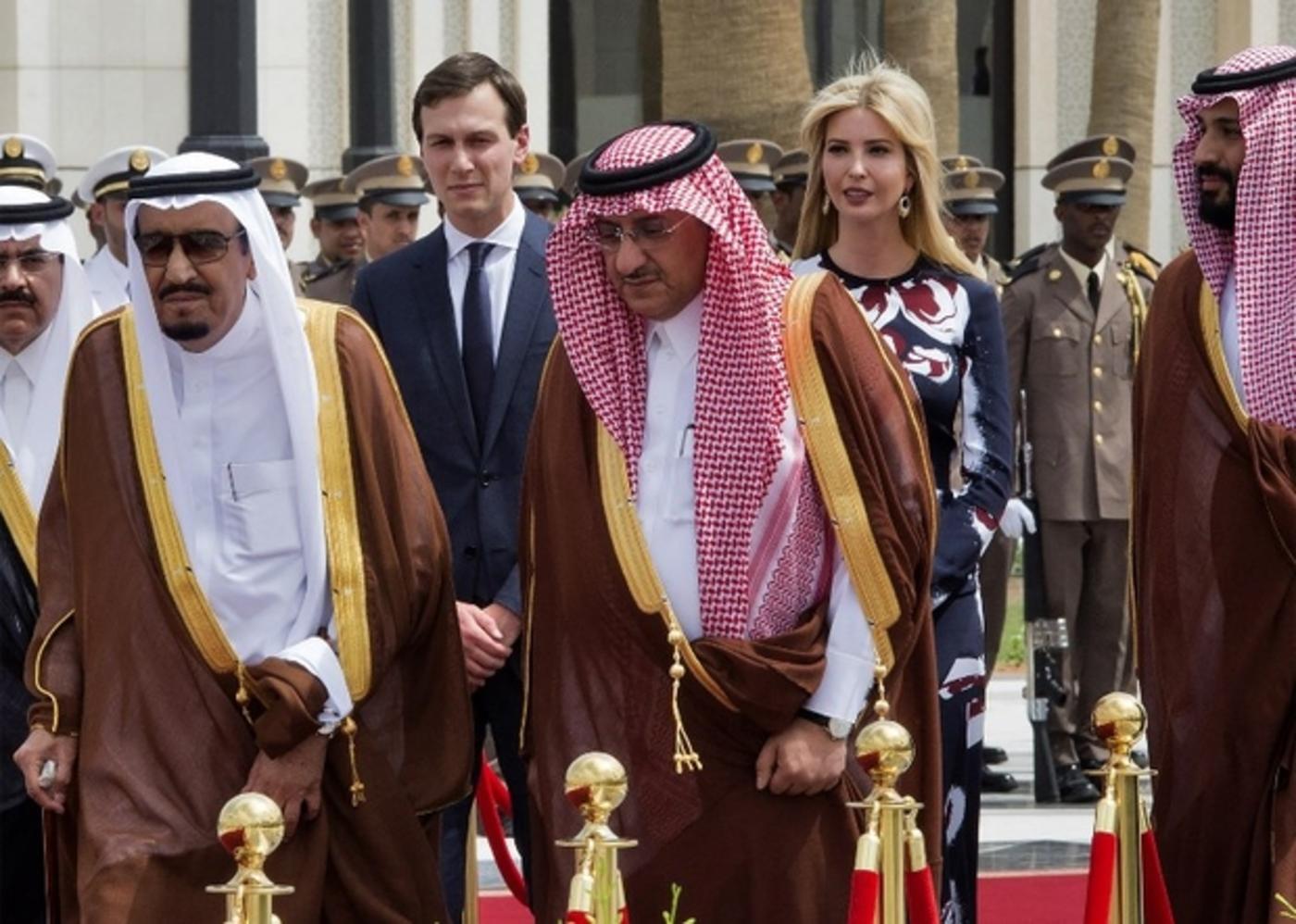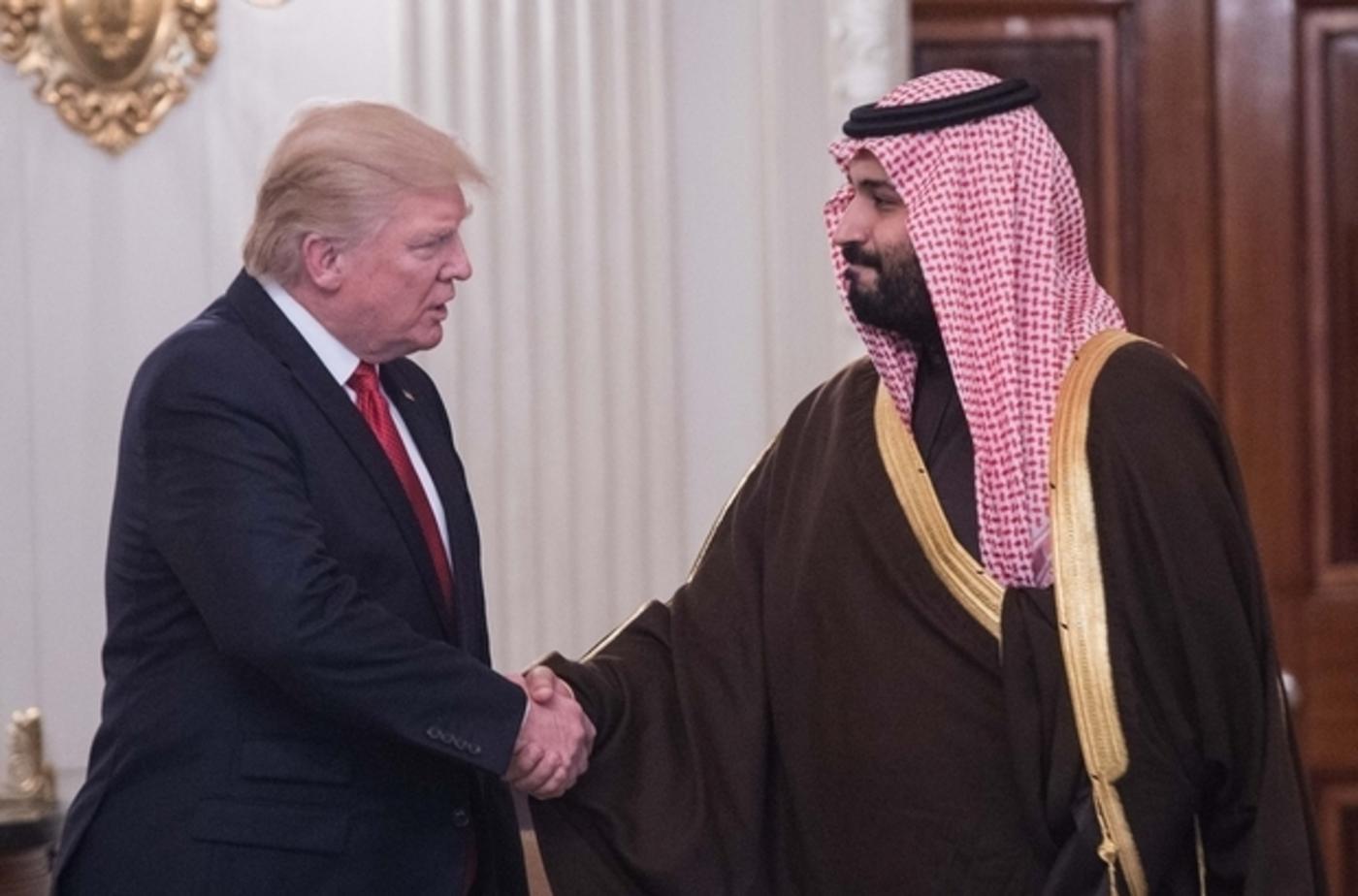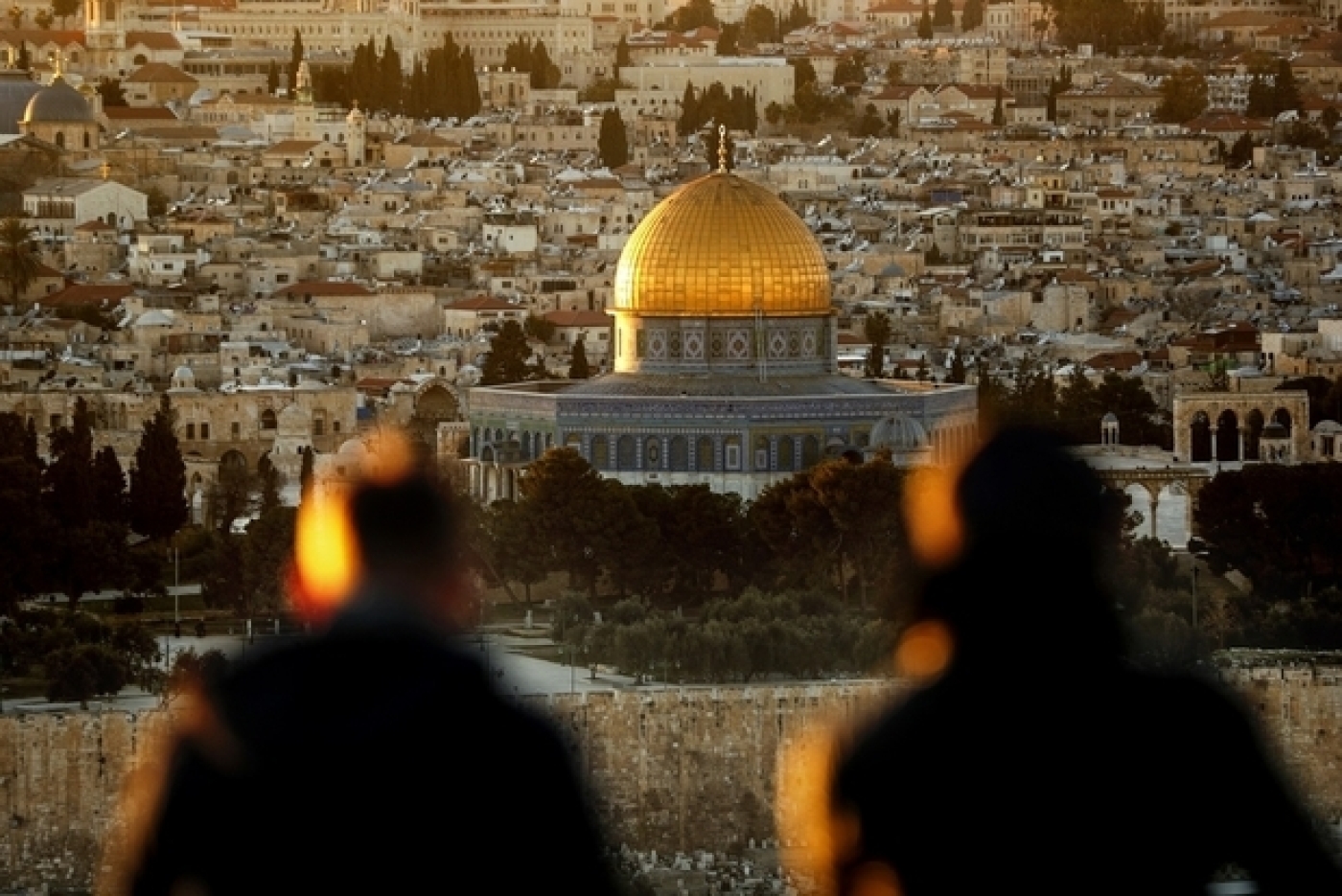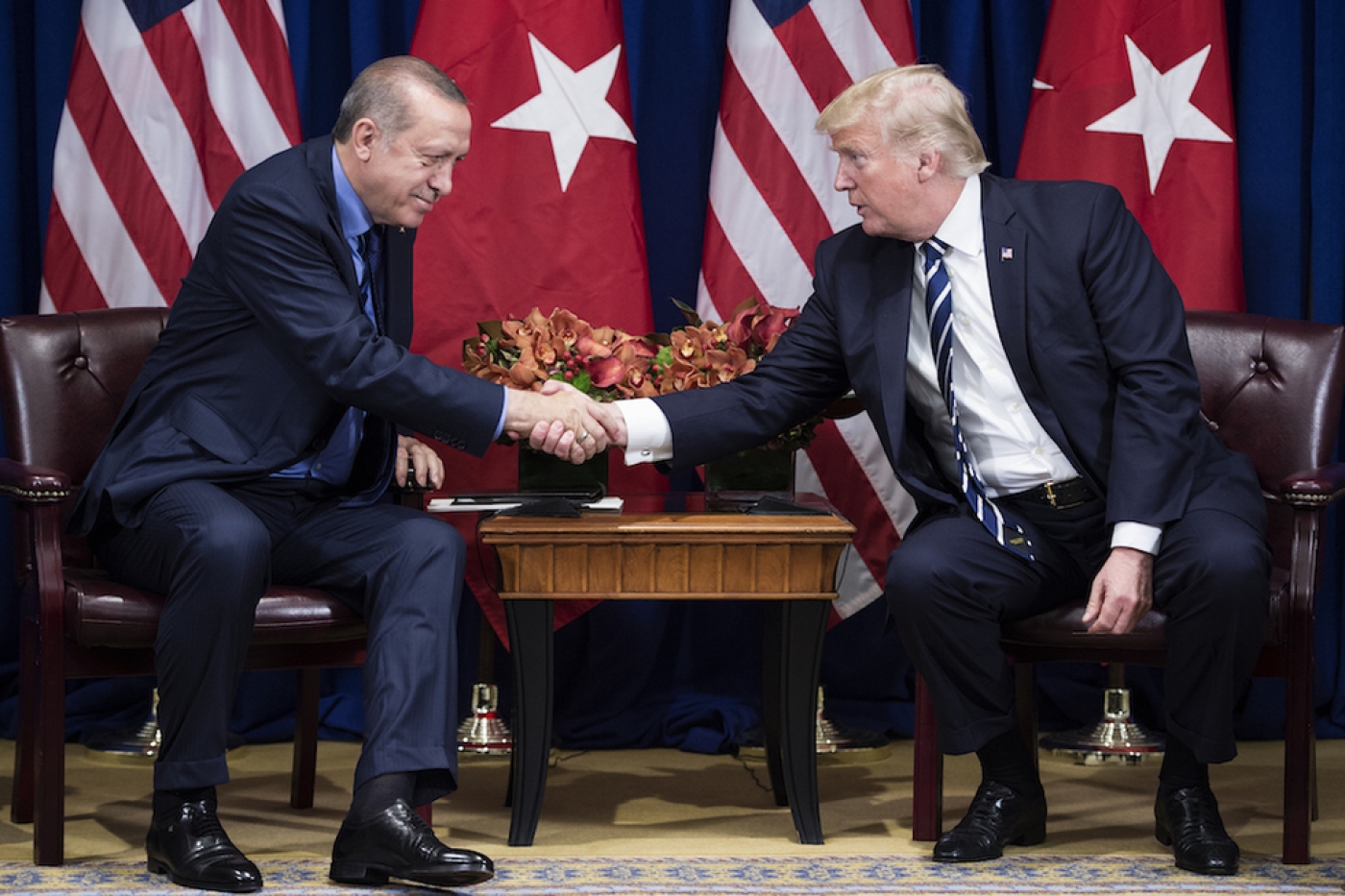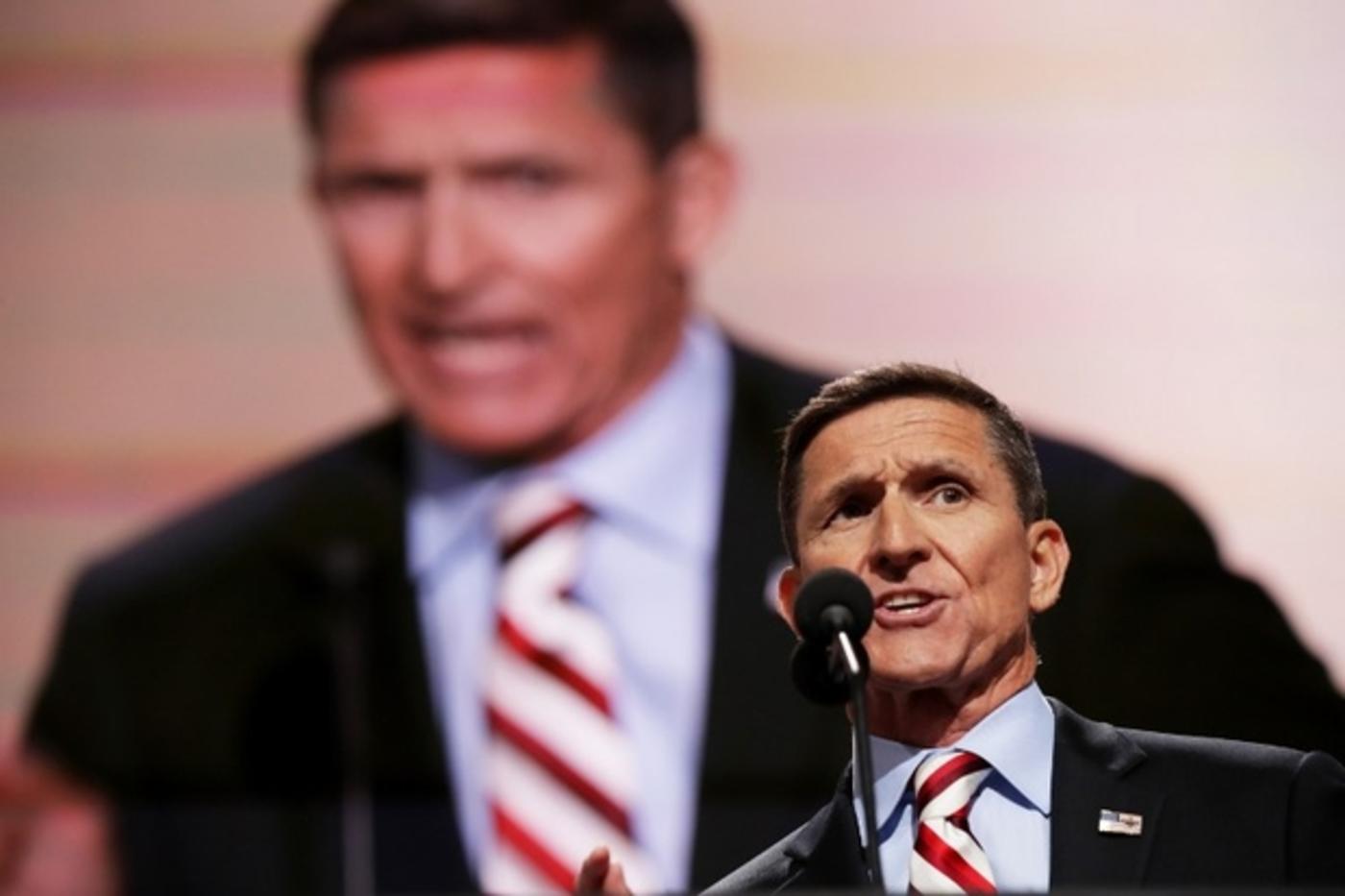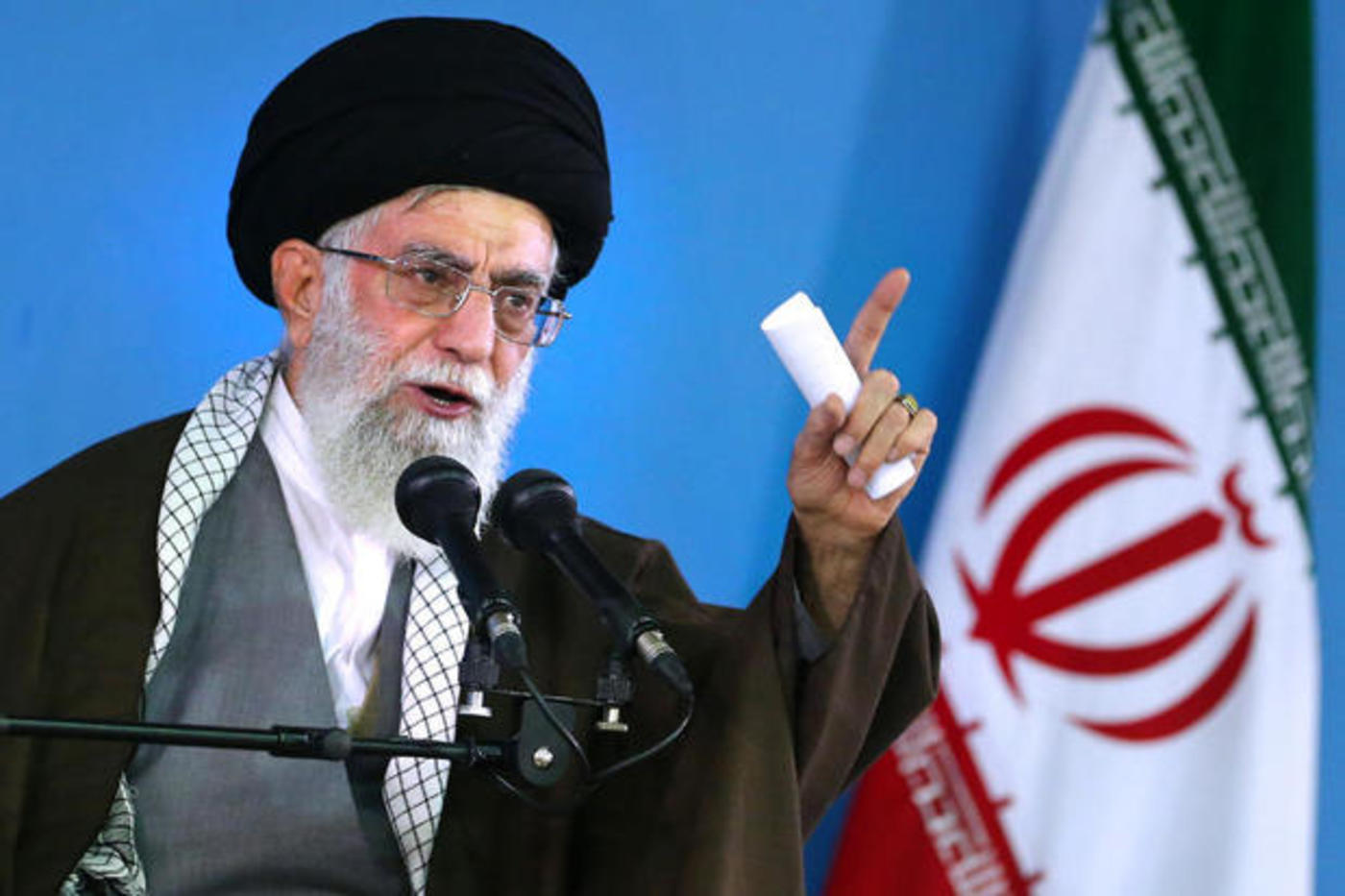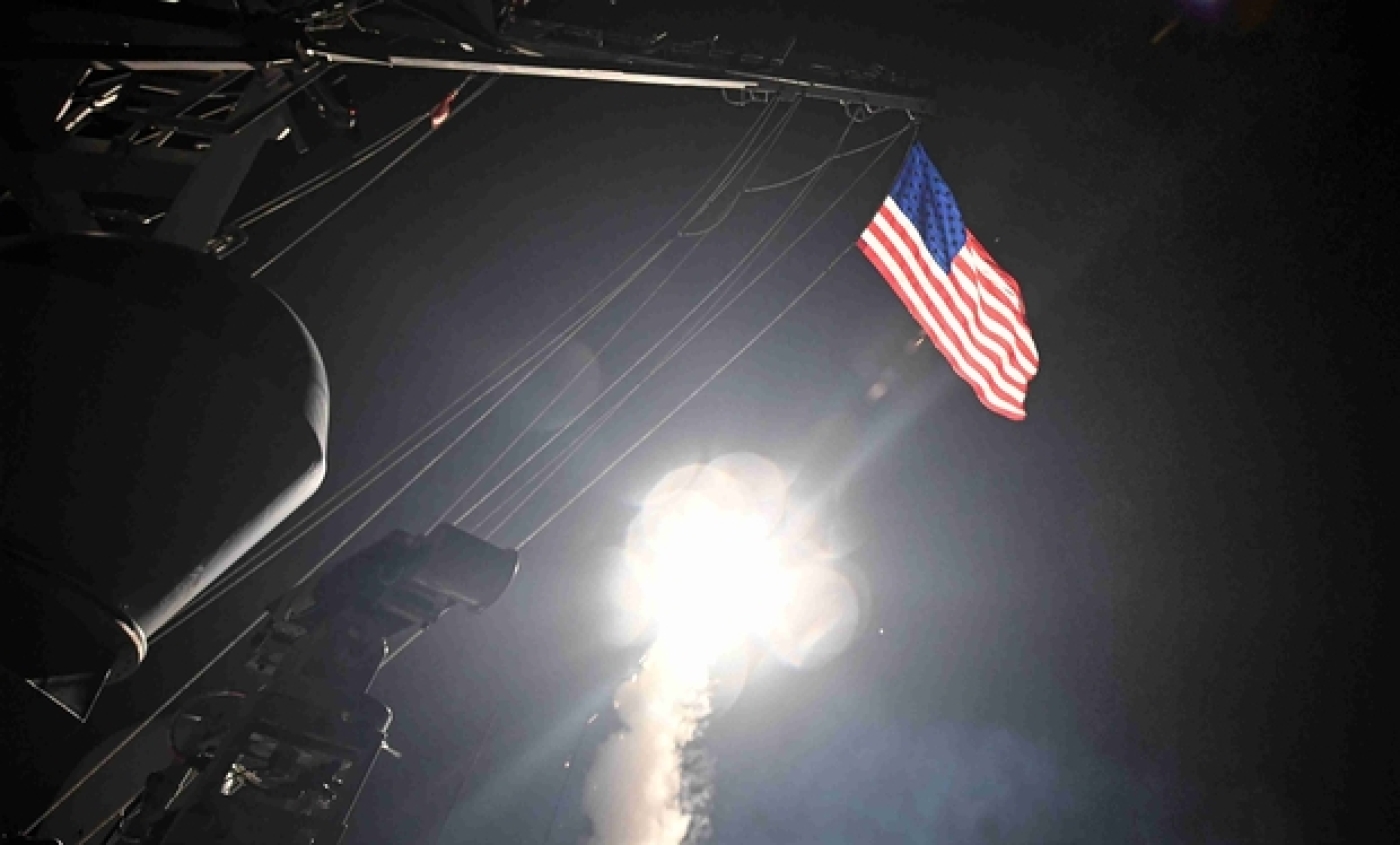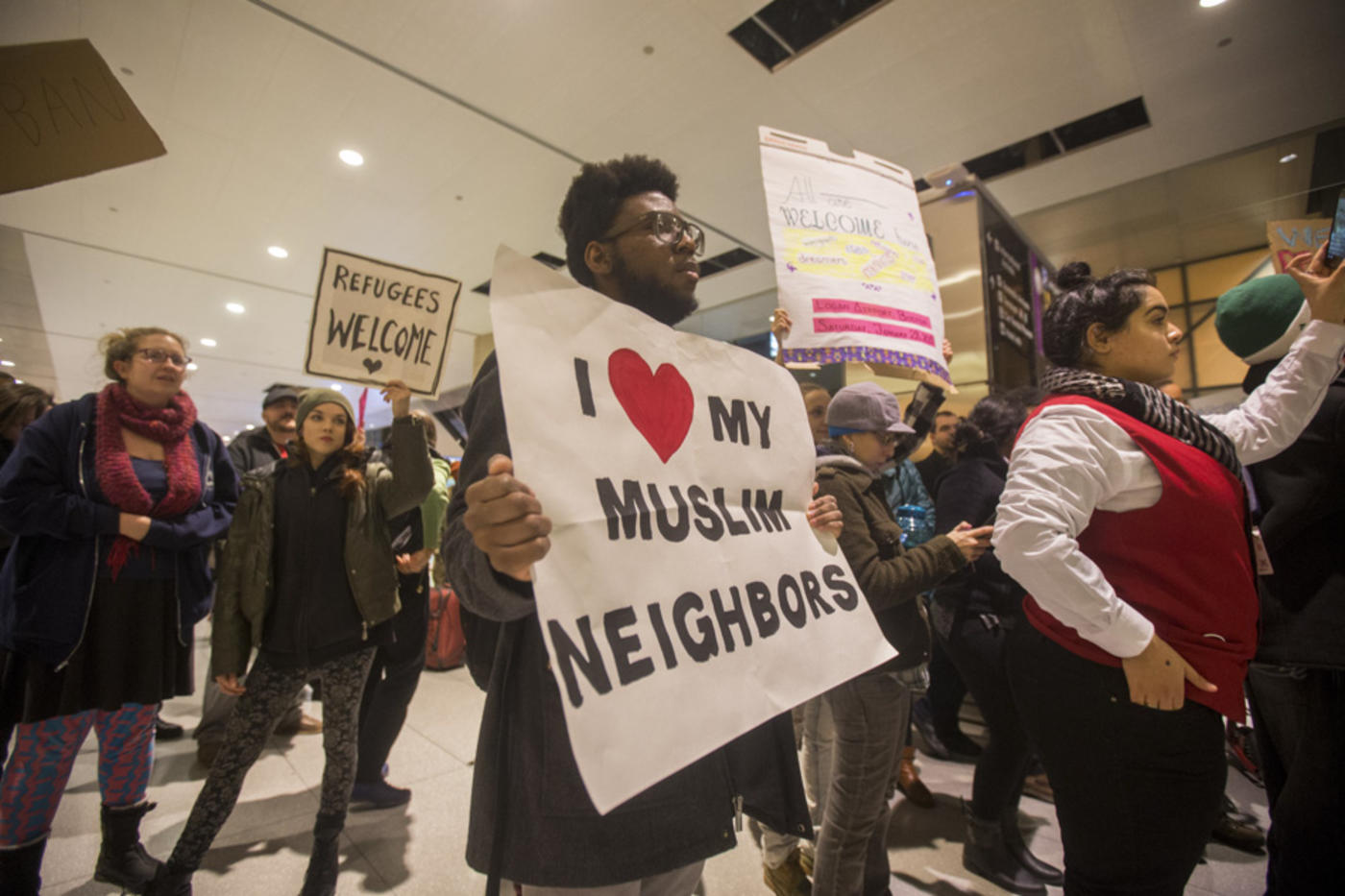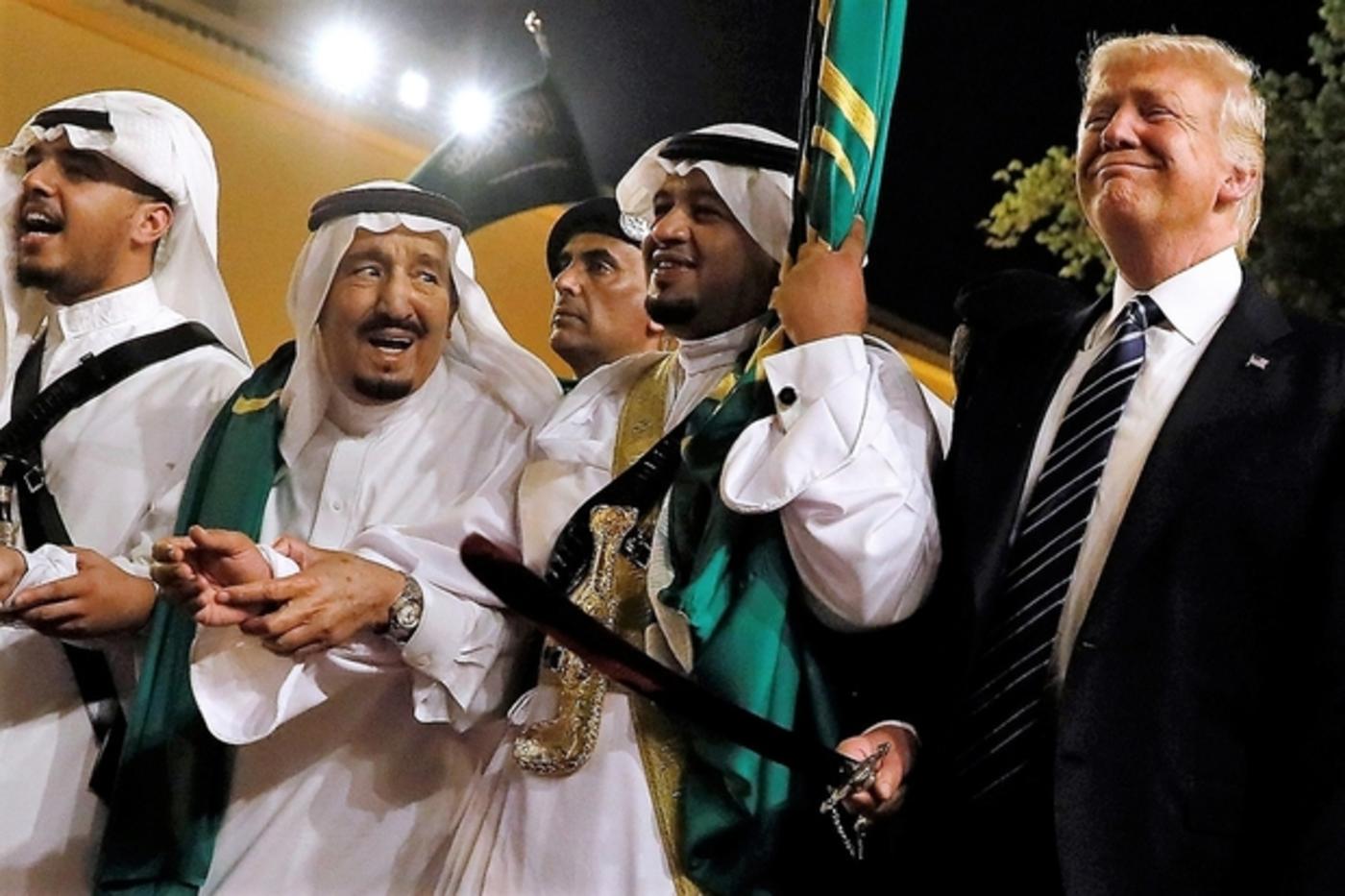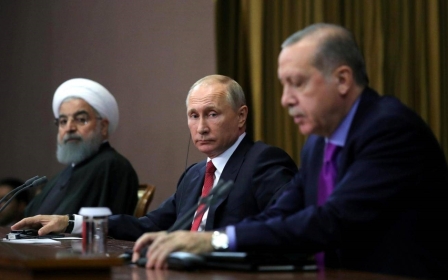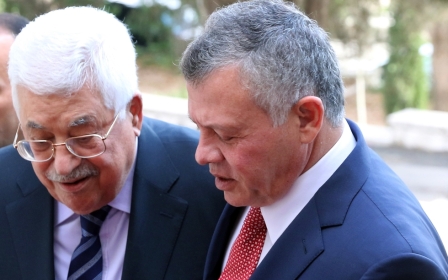Trump's vision of the Middle East: 11 things we've learned from 'Fire and Fury'
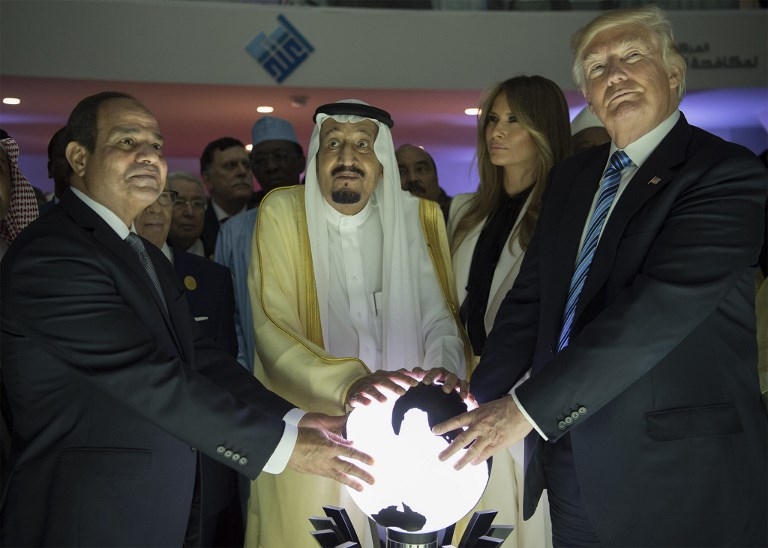
US President Donald Trump's foreign policy has been described as a "queasy-making mishmash of thought" in Fire and Fury, Michael Wolff's tell-all book that documents the first nine months of the Trump administration and has drawn legal threats from the White House.
Donald Trump has dismissed the book as "full of lies" and "misrepresentations"...
But on Friday Wolff thanked the US president for the increase in sales as the book hit shops four days early amid a wave of headline-grabbing revelations and publicity.
New MEE newsletter: Jerusalem Dispatch
Sign up to get the latest insights and analysis on Israel-Palestine, alongside Turkey Unpacked and other MEE newsletters
The books covers wide territory, including how Trump's inner circle claimed the last three US presidents had gotten the "Middle East all wrong".
From Trump ordering a missile strike on a Syrian air base to how Saudi Crown Prince Mohammed bin Salman became America's "man on top", here's what we've learned about Trump's vision of the Middle East - and the internal battles that have sometimes defined it.
1. It's win-win for Trump and Saudi's MbS
Wolff describes the synergy between Saudi Crown Prince Mohammed bin Salman (MbS) and Trump and his family as one fuelled by their shared quality of knowing little about what they were doing:
"When MbS offered himself to [Jared] Kushner as his guy in the Saudi kingdom, that was 'like meeting someone nice at your first day of boarding school', said Kushner’s friend."
Once MbS assured the Trump team that he would "deliver some seriously good news", he was invited to visit the White House, when Trump and MbS "grandly hit it off".
"It was an aggressive bit of diplomacy. MBS was using this Trump embrace as part of his own power play in the kingdom. And the Trump White House, ever denying this was the case, let him.
"In return, MBS offered a basket of deals and announcements that would coincide with a scheduled presidential visit to Saudi Arabia - Trump’s first trip abroad. Trump would get a 'win'."
2. Trump green-lit MbS to 'bully Qatar'
Trump allegedly gave the go-ahead for Saudi Crown Prince Mohammed bin Salman to "bully Qatar" and begin his purge of the Saudi royal family and business elite. Wolff wrote:
"The president, ignoring if not defying foreign policy advice, gave a nod to the Saudis' plan to bully Qatar. Trump's view was that Qatar was providing financial support to terror groups - pay no attention to a similar Saudi history. (Only some members of the Saudi royal family had provided such support, went the new reasoning.)"
Weeks after visiting Riyadh, Trump would tell his friends that he and Kushner engineered MbS's rise to power to become the Saudi crown prince and heir apparent to the Saudi throne.
3. The Bannon-Kushner war over peace talks
Trump knew he had thrown his son-in-law Jared Kushner in it when he gave him the Middle East peace portfolio. Fox News anchor Tucker Carlson joked that the president "hadn't done Kushner any favours".
"'I know,' replied Trump, quite enjoying the joke.
"The president was singling him out for being Jewish, rewarding him for being Jewish, saddling him with an impossible hurdle for being Jewish - and, too, defaulting to the stereotyping belief in the negotiating powers of Jews. 'Henry Kissinger says Jared is going to be the new Henry Kissinger,' Trump said more than once, rather a combined compliment and slur."
Meanwhile, Trump's then chief strategist Steve Bannon – whom Kushner, according to Wolff, had concluded was an anti-Semite – "did not hesitate to ding" him over the peace file. Bannon was in cahoots with casino magnate Sheldon Adelson, who "regularly disparaged Kushner's motives and abilities" – yet Trump kept telling Kushner to check in with Adelson, creating a vicious circle.
"Bannon's effort to grab the stronger-on-Israel label was deeply confounding to Kushner, who had been raised as an Orthodox Jew," Wolff writes. "For Kushner, Bannon's right-wing defence of Israel, embraced by Trump, somehow became a jujitsu piece of anti-Semitism aimed directly at him."
4. 'Jerusalem on the first day'
According to the book, White House strategist Bannon told former Fox News CEO Roger Ailes that Trump "would move the embassy to Jerusalem on the first day". Speaking candidly during a dinner with Ailes, which was later revealed to have been hosted by Wolff, Bannon gives his vision on how Trump would remake the Middle East:
"Let Jordan take the West Bank, let Egypt take Gaza. Let them deal with it. Or sink trying. The Saudis are on the brink, Egyptians are on the brink, all scared to death of Persia... Yemen, Sinai, Libya... this thing is bad... That's why Russia is so key... Is Russia that bad? They're bad guys. But the world is full of bad guys."
5. Turkey: Unsure about Trump
Early in the transition period, Wolff writes, a high-ranking Turkish official had reached out "in genuine confusion" to a prominent US business figure on how to influence Trump's White House.
The official asked "whether Turkey would have better leverage by putting pressure on the US military presence in Turkey or by offering the president an enviable hotel site on the Bosphorus".
Turkey, despite numerous attempts, has had a tough time lobbying the US to extradite Fethullah Gulen, a Pennsylvania resident and the alleged mastermind behind the failed coup attempt in July 2016.
6. The root of Trump's Iran hatred
Trump's hostile rhetoric towards Iran has defined his foreign policy. Wolff argues that, under the tutelage of former national security adviser Michael Flynn, Trump learned that Iran "was the bad guy".
It also led "Trump to believe that anyone who was opposed to Iran 'was a pretty good guy'."
7. The Middle East: Only four players
Trump's inner circle reduced the Middle East to being centred on "four players": Egypt, Israel, Saudi Arabia, and Iran.
They believed that the first three would be united against Tehran and hoped that Egypt and Saudi Arabia would not interfere in America's interests, so long as it had its way with Iran. Wolff wrote that this new stance on the Middle East represented:
"A queasy-making mishmash of thought. Bannon's isolationism (a pox on all your houses - and keep us out of it); Flynn's anti-Iranism (of all the world's perfidy and toxicity, there is none like that of the mullahs); and Kushner's Kissingerism (not so much Kissingerism as, having no point of view himself, a dutiful attempt to follow the 94-year-old's advice)."
8. How Trump came round to Syria attack
Following the chemical attack on the Syrian town of Khan Sheikhoun on 4 April 2017, Trump took the unprecedented decision to fire Tomahawk missiles at a Syrian government air base in retaliation.
Wolff described how Trump was uncertain at first how to proceed. And then:
"Late that afternoon, Ivanka [Trump] and [deputy national security adviser] Dina [Powell] created a presentation that Bannon, in disgust, characterised as pictures of kids foaming at the mouth. When the two women showed the presentation to the president, he went through it several times. He seemed mesmerised. Watching the president's response, Bannon saw Trumpism melting before his eyes."
After further discussion, on 6 April, Wolff writes, Trump ordered the attack for the following day.
"With the meeting over and the decision made, Trump, in a buoyant mood, came back to chat with reporters travelling with him on Air Force One. In a teasing fashion, he declined to say what he planned to do about Syria."
The attack took place while Trump entertained the Chinese president at Mar-a-Lago, his Florida residence. Once it was over, Trump and some of his advisers and team posed for photographs. But, Wolff writes: "Steve Bannon glowered from his seat at the table, revolted by the stagecraft and the 'phoniness of the fucking thing'."
Trump's foreign policy in the Middle East has, at times, seemed unpredictable. But, on this occasion, writes Wolff: "His national security staff were even more relieved. The unpredictable president seemed almost predictable. The unmanageable president, manageable."
9. Muslim travel ban: Bannon wanted protests at airports
Chief White House strategist Steve Bannon was doggedly determined to pass the executive order [EO] to ban Muslims from certain countries from entering the US – but there was a problem.
"Bannon really didn’t know how to do this – change rules and laws. This limitation, Bannon understood, might easily be used to thwart them. Process was their enemy. But just doing it - the hell with how - and doing it immediately, could be a powerful countermeasure."
Bannon, who according to Wolff never used a computer, sent White House policy adviser Stephen Miller "to the internet to learn about and to try to draft the EO".
By the time the order was signed on 27 January, most of the White House staff demanded to know why it had happened on a Friday "when it would hit the airports hardest and bring out the most protesters". Wolff writes:
"Errr... that's why," said Bannon. "So the snowflakes would show up at the airports and riot."
10. Secretary Haley, Ambassador Powell?
UN ambassador Nikki Haley, described by a senior staffer as "as ambitious as Lucifer", had been brought into the Trump circle by the president's daughter, Ivanka, whom she "courted and befriended".
Haley, according to Wolff, had concluded that Trump would be a one-term president – if that – and "that she, with requisite submission, could be his heir apparent". The Trumps, however, had different ideas.
"Haley, as had become increasingly evident to the wider foreign policy and national security team, was the family's pick for secretary of state after Rex Tillerson's inevitable resignation. (Likewise, in this shuffle, Dina Powell would replace Haley at the UN.)"
Bannon was so worried that Haley might outsmart Trump, wrote Wolff, that he pushed for the Trump-appointed CIA director, Mike Pompeo, to replace Secretary of State Tillerson if – or more likely when – he eventually resigned.
11. Golden... golf carts
During Trump's first foreign trip, to the landmark summit in Riyadh in May 2017, and the now famous orb on which the gathered leaders together placed their hands, the first family, including Jared Kushner and wife Ivanka, "were ferried around in gold golf carts", and the Saudis threw a $75m party in Trump's honour, complete with a throne-like chair on which the president sat.
"The president called home to tell his friends how natural and easy this was, and how, inexplicably and suspiciously, Obama had messed it all up."
This article is available in French on Middle East Eye French edition.
Middle East Eye delivers independent and unrivalled coverage and analysis of the Middle East, North Africa and beyond. To learn more about republishing this content and the associated fees, please fill out this form. More about MEE can be found here.


